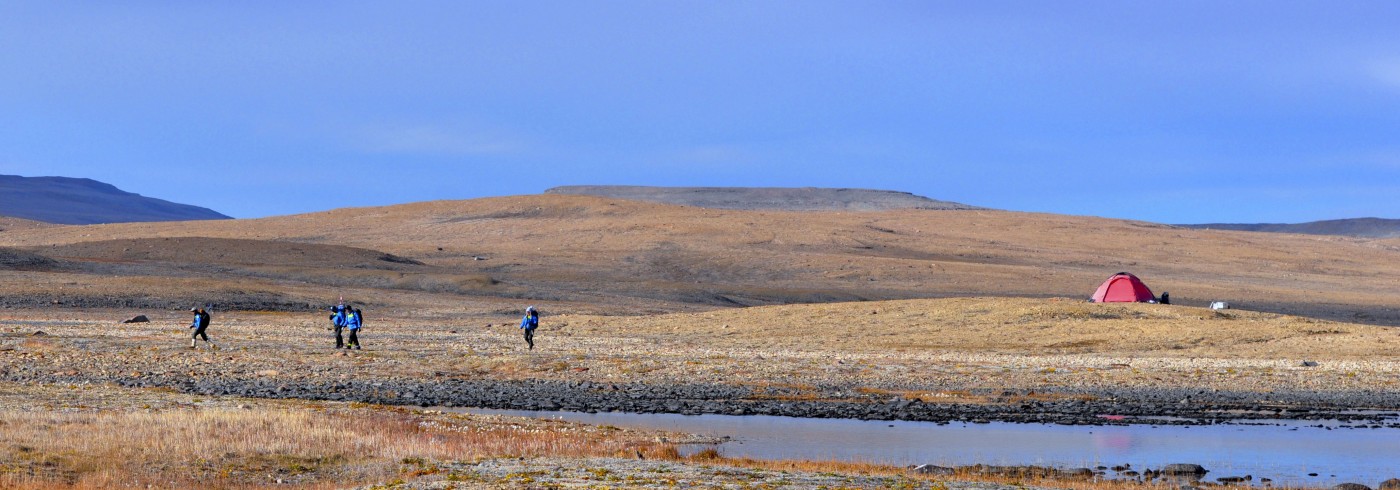How is climate change affecting Arctic biodiversity?
9 July 2016 - 7 August 2016
Nedim Curic, Lucy Naud and Lukas Scholtz going through the sample protocols, Abisko Scientific Research Station is seen in the background. Photo: Fredrik Daleru
We believe that global warming will contribute to a northerly expansion of boreal species. As these sub-Arctic species expand northward, they will force out the existing, less-resistant Arctic species, which will then be found only on Arctic islands.
In the Arctic Islands Project we are studying the potential ecological consequences that could arise as Arctic species communities fragment and lose contact with one another, and how this will affect various ecosystem services. These studies can contribute important knowledge to the effort to manage and preserve Arctic ecosystems in the face of global warming. Because they are relatively simple, Arctic ecosystems are also ideal models for studying the ecological consequences of climate change.

Christine Godeau observing an inquisitive wolverine along one of our sampling transects. Photo: Fredrik Dalerum
This summer we have been working in the sub-Arctic mountains near Abisko in northern Sweden. This is an area where the boreal forest meets the Arctic. The fieldwork carried out this summer was a continuation of the studies conducted in 2015, when we travelled to northern Greenland and Ellesmere Island in Canada to collect specimens. Visiting different sites gives us a way to compare and characterise the differences between the various areas studied. This will help us to better understand the consequences that different characterisations have for different components of biodiversity, and how this could impact the provisioning of Arctic ecosystem services.
Our studies are based on transects where we observe plants, invertebrates, birds and mammal groups. We have also collected faeces from birds and mammals to determine what these animals eat, as well as tissue samples so we can study the animals’ genetic structures.
We have already begun performing the genetic analyses, and will continue to analyse the gathered data in parallel with the work of writing the first scientific articles based on our studies. We will be visiting numerous Arctic islands and mainland sites in future field seasons in order to complete our data collection.



